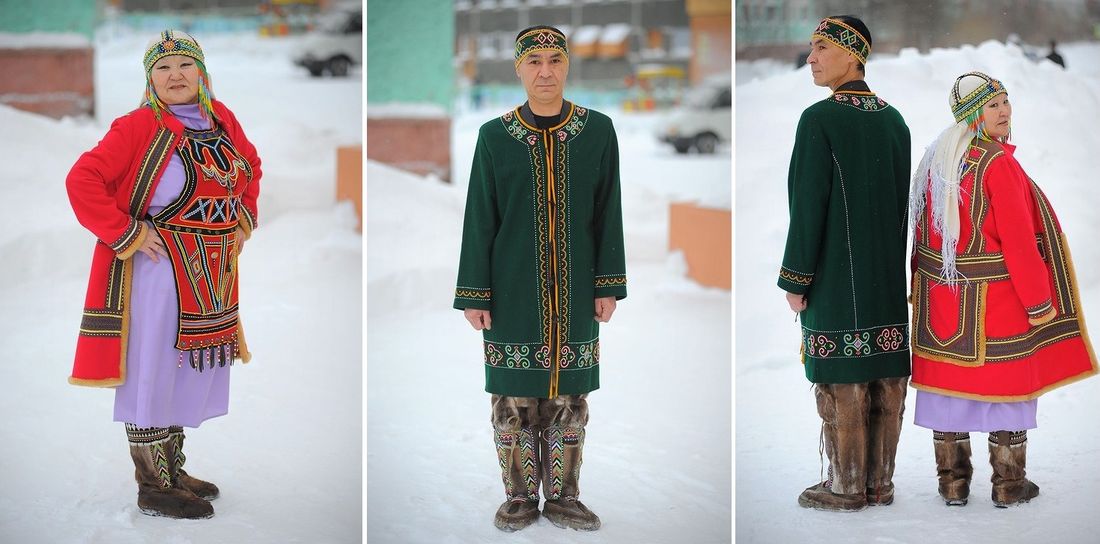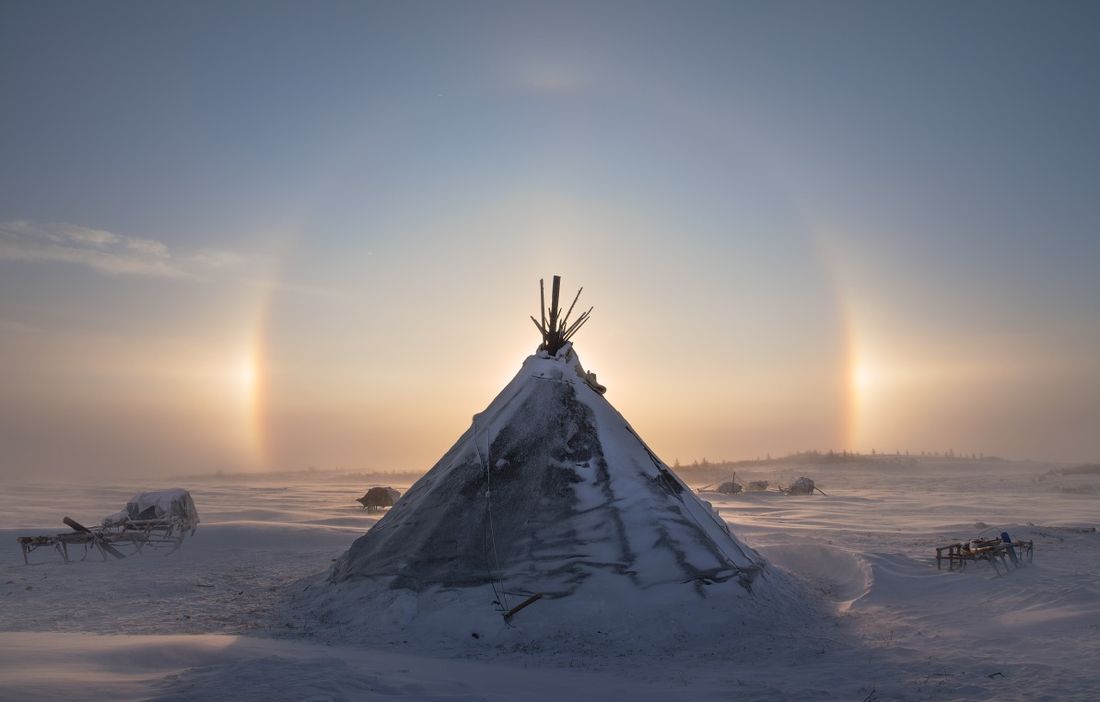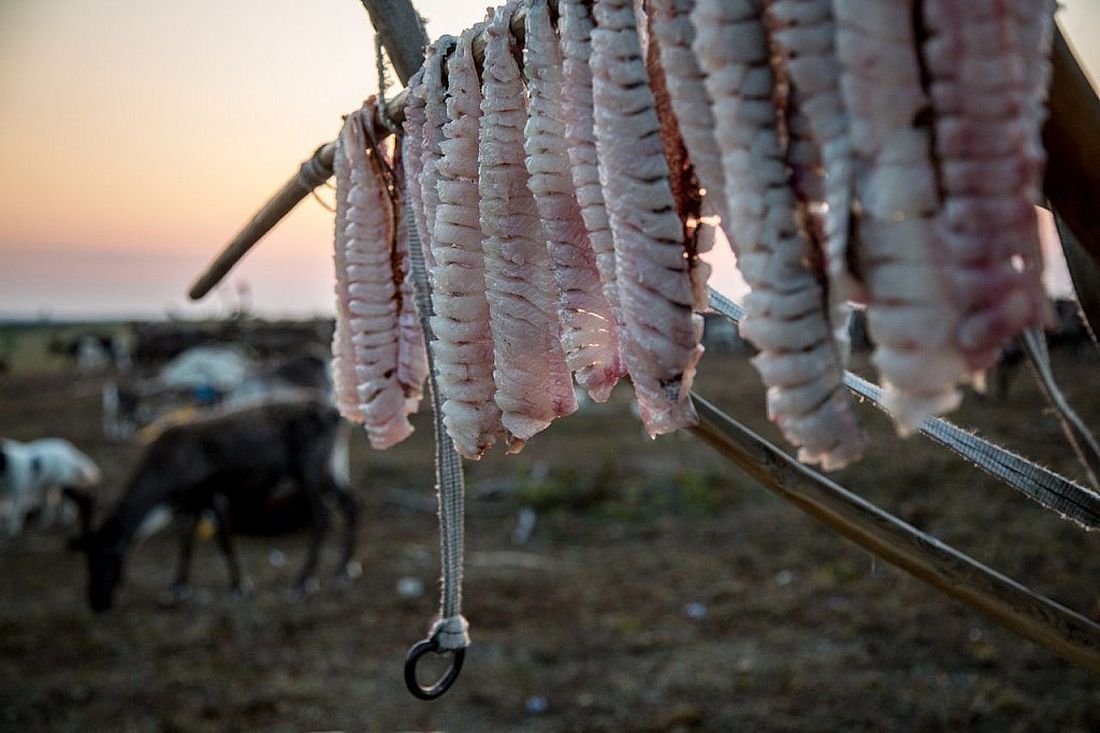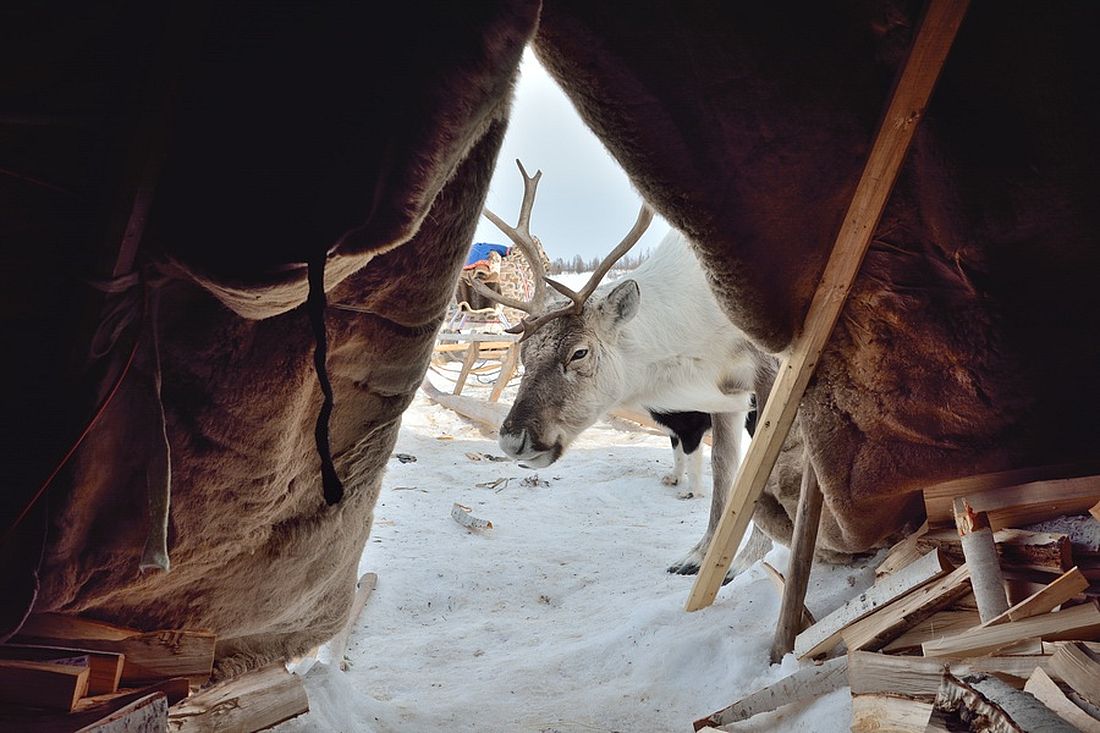The Evenks, including those living in the Taimyr village of Hantayskoye Lake, are descendants of the Tungus Golden empire state inhabitants. When the empire was defeated by the troops of Genghis Khan, part of the Tungus left for the North.
1. Currently, 30 thousand Evenks live in Russia, 20 thousand – in China, 3 thousand – in Mongolia. There are about 300 Evenks in Taimyr; they chose the shore of Lake Hantayskoye as their habitat.
“We, the Hantay taiga Evenks, came here mainly from Evenkia through the Putorana Mountains”, says Tatyana Bolina-Ukocher, chief expert on Evenk culture of the Taimyr House of Folk Art, head of the Yukte ethno-folklore group. “In the Turuhansk region there is the village of Sovrechka (Sovetskaya Rechka), where only Evenks live. People from there also decided to settle on the Lake Hantayskoye shores, because when they came, the lake was teeming with large fish. You could catch it with your hands. And they stopped at this place”.
2. The Evenks had their own clothing and footwear for each season. Winter deer parka (hoilma), short, without a collar, with fur outside, was sewn from autumn skins with a short, but thick and durable pile. For women, it was decorated with beads and fox fur. Under the parka, they wore a jersey lined with fox or polar fox fur. Getting ready for the road, Evenks also put on sokuy – long clothes with a hood.
Unlike representatives of other indigenous peoples of Taimyr, older Evenk women wore scarves under beaded headbands so that they would fall over their shoulders. In ancient times, girls had many braids, and when they got married, they made just two of them. Men tied a long tail at the head top. Evenks were familiar with piercing popular today. Tattoos complemented the image.
3. The Evenks, like other indigenous inhabitants of Taimyr, lived in tents, covered with reindeer skins in winter, and rovduga (suede) in summer. Another type of summer dwelling was golomo, covered with birch bark, which does not rot and does not allow water to penetrate.
“The tent is the most environmentally friendly and correct dwelling, because when the smoke goes, it makes a circle and flies out into the hole above”, explains Tatyana. “A traditional raw-hide cone shaped tent, and all Evenks agree with this, is much better than a simple tent, since it has more air inside, the draft is better, it is possible to dry clothes, it keeps warm longer. Our tents are smaller than the Nenets ones, which have 50-60 poles, and we have about 30-40, because we, taiga people, are very mobile, in winter use sledges, in summer we ride reindeer. Everybody knows Tungus is extremely dexterous”.
4. The Evenks had their own method of preventing and treating diseases, since there were no pharmacies in the tundra. They drank an infusion of birch chaga for a sick stomach, bear bile, cloudberries helped for diarrhea, lingonberries – for pressure, colds, even mother’s milk served as a medicine.
Actually, in the tundra, as in a large hypermarket, everything is at hand. Only the “goods” ran, swam and flew. It is necessary to catch a reindeer in order to make clothes of the skin and sew bags for storing things and food; finely trim the frozen osier to use the resulting soft and white shavings as napkins. It takes hours, months and years to sew reindeer hide clothes for all family members.
5. “Carriages” for infants were peculiar to the Evenks. When the parents wandered from place to place, a bag with things was tied on one side of the saddle, and a cradle with a child on the other. So he traveled through the mountains, over the hills, and when he got to his feet, he quickly mastered the rules of independent riding.
6. The menu of the Evenks, as well as of other Taimyr peoples, included meat and fish, boiled, fried, dried, sliced whitefish. They ate deer liver, kidneys and brains raw.
They baked oma cakes over a fire, placing them on hot ash. Then just took the ash away – and the magnificent, beautiful bread was ready. In other flat cakes – tyhe – red caviar was added directly to the dough. The fish baked in ash was called iripcho.
Evenks cooked homemade yogurt from reindeer milk. It is very viscous, thick, fatty, high-calorie, like liquid sour cream. Add a berry – here’s delicious yogurt. In winter this milk will be frozen and turn into natural ice cream. Evenks even made butter and cheese. A deer is walking along the tundra, milk is in a bag on its side, it sways and the butter is whipped.
7. Tatyana is also a native language teacher at the Taimyr College. Evenk belongs to the group of Tungus-Manchu languages. For example, “Chita” (the capital of Zabaikalsky region) is a Tungus word, the specialist in Evenk culture gives examples. “Chata” means clay. The city of Irkutsk got its name from the larch – irekte. The Biryusa River is “birosal” – “right bank”. The name of the Taimyr Peninsula, according to the Evenks, came from the word “tamura” – “dear, valuable”. Yenisei is “ionessi” – “big water”. Russian bread is called kolobo.
You will not find many Evenk sounds in Russian. For example, the sound of Tatyana’s surname is closer to “khukochar” (the word is translated as hatchets, strong people), but in Taimyr she sounded like Ukocher.
Read about other Taimyr indigenous peoples – the Nganasans, Dolgans, Enets – on our site.
Text: Tatyana Rychkova, Photo: Nikolay Shchipko and open sources






